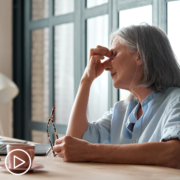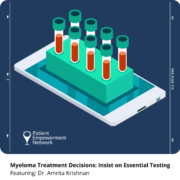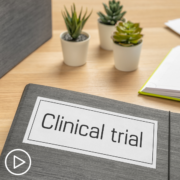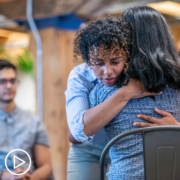How Can Myeloma HCPs Overcome Unforeseen Practice Related Barriers?
How Can Myeloma HCPs Overcome Unforeseen Practice Related Barriers? from Patient Empowerment Network on Vimeo.
What are some solutions to myeloma patient care barriers? Expert Dr. Craig Cole from Karmanos Cancer Institute discusses barriers and solutions he has encountered with his patients and how patient comfort levels with clinical trials have improved.
Download Resource Guide | Descargar guía de recursos
Related Resources:

|

|
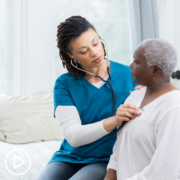
|
Transcript:
Dr. Nicole Rochester:
Dr. Cole, I’m going to turn the conversation back to you. As a physician, I know that often, there are some barriers just as part of our everyday practice that can hinder our work. And so I’d love for you to speak to any unforeseen or outdated practice related barriers that you feel may hinder your work, and the work of your colleagues specifically as it relates to myeloma trials. And then if you could also share some potential solutions to those barriers.
Dr. Craig Cole:
Yes, super good question. I love this question. There are a lot that are out there that I…barriers that I hear providers talk about at other academic centers and in the community. One is that patients don’t want to go on clinical trials that they…and some of that is subconscious bias. Sometimes those are true, true bias. We know the FDA knows all the drug companies all, and I think every myeloma provider knows that there have been horrific disparities in the enrollment of patients in clinical trials based on race and age and ethnicity that the FDA looked at some of the data of trials that were going for FDA approval, and found that over the past 10 years, and that in those trials, that only 4 percent of the population of the trials were Black.
While in the United States, the number of Black myeloma patients is about 20 percent, over 20 percent of the myeloma population. So that’s a huge disparity. And what I hear is that while older patients and Black and Hispanic and Asian patients don’t want to go on clinical trials, and that’s not true. That’s been shown in multiple clinical trials that actually, the patients of different ethnicities and races actually are more likely to go on clinical trials than other racial groups. And so I think that it’s really important to keep that in mind that patients really…that really the ownership of getting a patient on a clinical trial is really on us to present the clinical trial option to them with every single conversation that we have.
Some of the other barriers to clinical trials is, and Ms. Gleason had mentioned this, what they do at through the Emory system is that, well, the nurses and the other staff in the cancer center aren’t aware of the clinical trials, that when a patient goes through the clinic, they talk to more than just the provider. They talk to the treatment nurses, they talk to the intake people, they talked to the MAs, they talked to the scheduling people.
And there was a study that was done a few years ago in looking at patients who were given consent forms and declined clinical trials. And they found that a lot of patients declined clinical trials, well, because they said that, well, their doctor didn’t want them on the trial. And when they looked further into that, they saw that, well, the doctor offered them a clinical trial, but when they discussed the clinical trial with a nurse practitioner, when they discussed that trial with a treatment nurse or the MA or any of the other staff, when they didn’t know about the clinical trial, that was considered well, if you don’t know about the clinical trial, it must not be good for me. And then they withdrew from the trial.
So just like what they do, what Ms. Gleason had said, we have an all-in approach. We make sure that the treatment nurses, the MAs, the intake people know what we’re doing, know about our clinical trials, because that’s the fun part about what we do. The fun part is when we say, look, my goodness, this four-drug therapy had a 100 percent response rate. That shouldn’t be left in the physician compartment. It really shouldn’t be left in the provider compartment. That excitement should be clinic-wide. And when you have that all-in approach where everybody’s involved, everyone’s excited about clinical trials, it produces a culture of clinical trials that everybody wants to be part of, and the patients then can jump on that bus and feel comfortable participating in the trial.
Dr. Nicole Rochester:
Wow. Thank you for elucidating that. Both the issue of the health disparities that we see in clinical trials and the need to diversify that clinical trial patient population, some of those biases that exist, as well as really lifting up this idea of creating a culture of clinical trials.I love the language that you use for that and the idea that everyone throughout the entire clinical encounter needs to be both aware of, and excited about the clinical trials that are underway.



